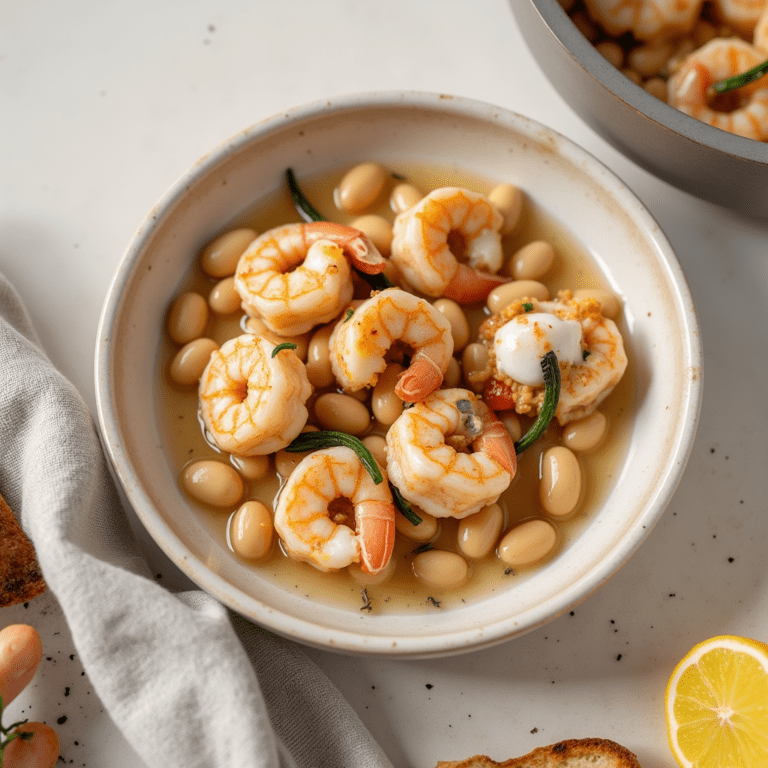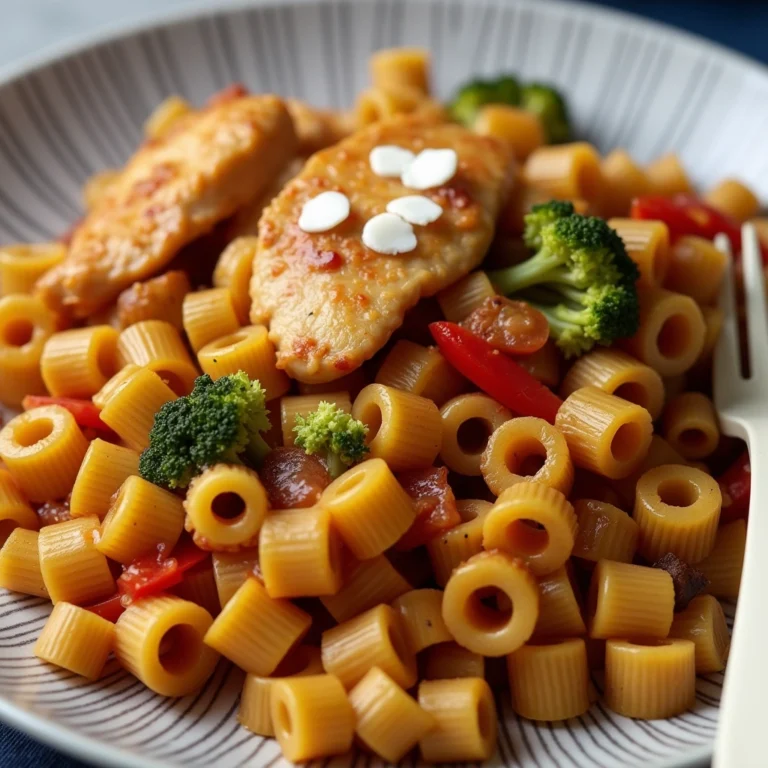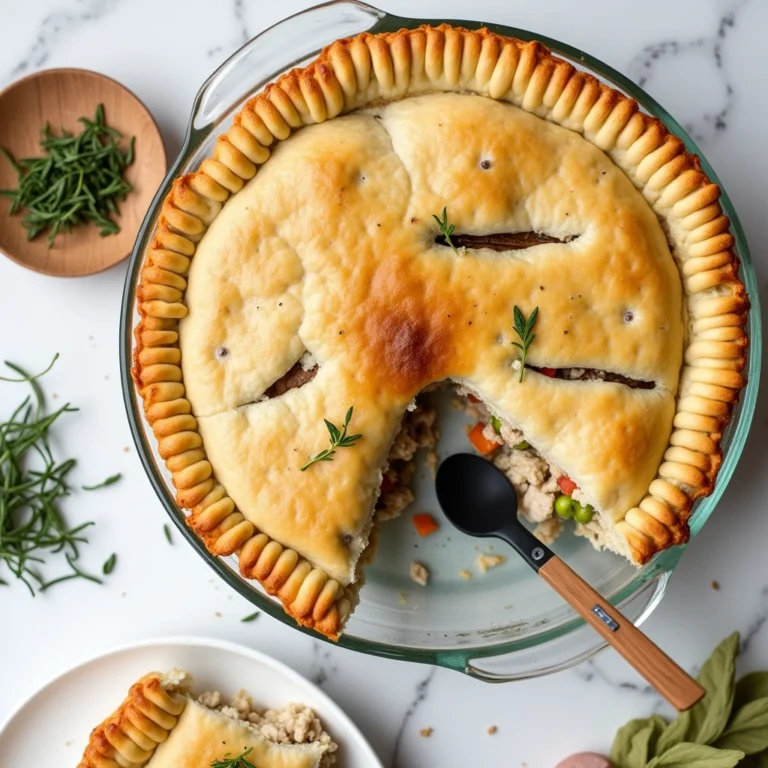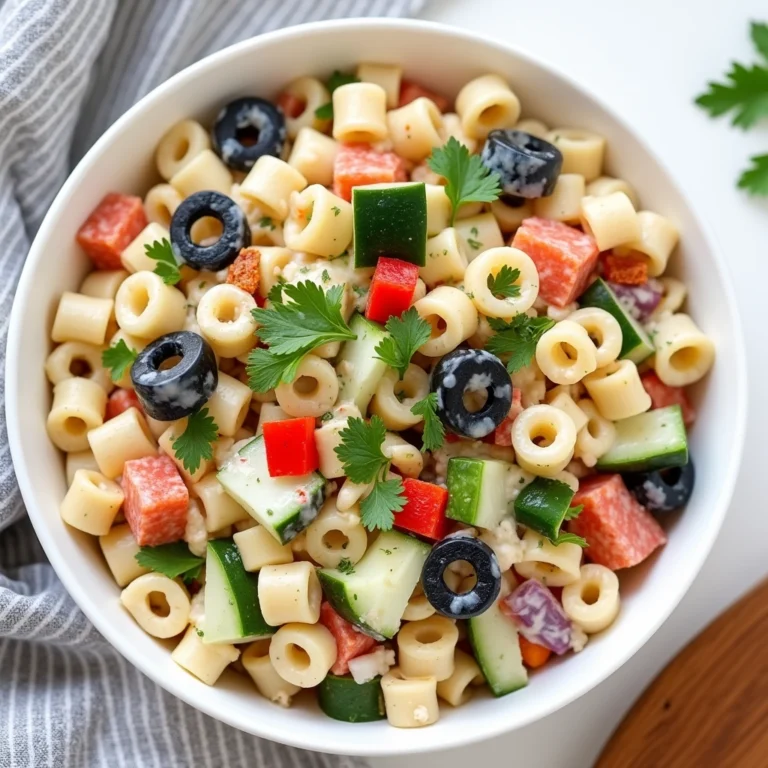How to Make a Legendary Original Delmonico Steak Recipe
Master the Original Delmonico Steak Recipe with this step-by-step guide inspired by the legendary New York City restaurant. Learn how to select the right cut, cook it to perfection with butter and herbs, and pair it with classic side dishes for a five-star steakhouse experience at home.
Original Delmonico Steak Recipe recreated with rich butter sauce and historic technique. Pan-seared perfection in under 1 hour.
Original Delmonico Steak Recipe isn’t just another cut of beef—it’s a rich slice of American culinary history. Whether you’ve tasted it at a high-end steakhouse or you’re looking to recreate the legendary dish at home, understanding the original Delmonico steak recipe gives you a glimpse into one of the oldest fine-dining traditions in the U.S. In this guide, we’ll explore everything from the steak’s New York City roots to how to cook it like the original chefs intended. You’ll also learn which cut of beef is truly authentic, how to season and sear it to perfection, and the side dishes that elevate it from great to unforgettable.
History and Origins of the Original Delmonico Steak
The Birthplace: Delmonico’s Restaurant in New York City
To understand the Original Delmonico Steak Recipe , we have to travel back to the 1800s, right into the bustling streets of Lower Manhattan. In 1837, the Delmonico brothers opened Delmonico’s, widely regarded as the first fine-dining restaurant in America. It wasn’t just the food that was groundbreaking—it was the experience. Crisp tablecloths, an à la carte menu, and dedicated service were all part of what made Delmonico’s revolutionary at the time.
The restaurant quickly gained fame for its luxurious offerings, including a signature steak so iconic it bore the restaurant’s name. But here’s the twist—Delmonico’s never explicitly defined the exact cut of the steak. Instead, the term referred to how the steak was selected, trimmed, prepared, and cooked, making it more of a technique and experience than a specific cut of meat.
Delmonico’s chef at the time, Charles Ranhofer, is often credited with refining the recipe that would evolve into the Delmonico steak we know today, thanks to his deep understanding of French cooking techniques blended with American flavors.
What Makes a Delmonico Steak “Original”?
So what exactly qualifies as the Original Delmonico Steak Recipe? While there’s still debate, most food historians and chefs agree on a few key features:
- It was a thick-cut, boneless piece of beef—tender and richly marbled.
- The meat was pan-seared in butter and finished in the oven to develop a crisp crust and juicy interior.
- It was often served with Delmonico potatoes, a creamy, cheesy, baked potato dish created in-house at the restaurant.
- The steak was hand-cut and custom-trimmed, ensuring consistent thickness and fat distribution.
Originally, the cut could vary based on availability and the chef’s preference. Some reports point to the ribeye, while others argue for a top loin (striploin) or Chuck Eye. The key factor wasn’t the label—it was the quality, thickness, and luxurious preparation.
Essential Ingredients for the Original Delmonico Steak Recipe
Steak Quality and Marbling
The centerpiece of any Delmonico steak recipe is, of course, the steak. While Delmonico’s originally selected the finest cuts available, today’s home cooks should aim for prime-grade beef with visible marbling for the best flavor and texture. The marbling ensures a juicy, tender bite after searing and finishing.
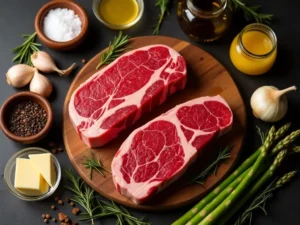
Here’s what you’ll need for 2 servings of an authentic Delmonico-style steak:
Core Ingredients:
- 2 boneless ribeye steaks, 1.5 to 2 inches thick (about 16 oz each)
- 1 tablespoon kosher salt
- 1½ teaspoons freshly ground black pepper
- 2 tablespoons olive oil (for initial searing)
- 3 tablespoons unsalted butter (for basting)
High-quality boneless ribeye steaks closely resemble the original cut used at Delmonico’s. If unavailable, opt for a top loin (strip steak) or chuck eye steak, ensuring it’s well-trimmed and at least 1.5 inches thick.
Seasoning Simplicity: Salt, Pepper, Butter, and Herbs
The magic of an original Delmonico steak lies in its simplicity. There’s no need for heavy marinades or dry rubs—the right cut of meat, cooked properly, shines on its own. The butter-basting stage infuses it with extra flavor and helps build a rich crust.
Aromatics for Butter Baste:
- 2 cloves garlic, lightly crushed (leave skin on for a mellow flavor)
- 2 sprigs fresh rosemary
- 2 sprigs fresh thyme
- 1 shallot, sliced in half (optional, for a mild sweetness)
When these aromatics hit the hot butter, they release fragrant oils that coat the steak during basting. This technique, known as arroser, adds a layer of herbaceous richness without overpowering the beef’s natural flavor.
Optional Additions for Elevated Flavor
If you’d like to create an even more indulgent version of the original recipe, consider these extras:
- 1 tablespoon Worcestershire sauce – mixed with butter for umami depth
- 1 teaspoon Dijon mustard – brushed lightly before searing for a tangy crust
- 1 pinch smoked paprika – adds a hint of smoky sweetness without a grill
These aren’t traditional to the 1800s version but can modernize the profile without drifting too far from the roots.
Table: Ingredient Summary for 2 Delmonico Steaks
| Ingredient | Quantity | Purpose |
|---|---|---|
| Boneless Ribeye Steaks | 2 (16 oz each) | Main protein |
| Kosher Salt | 1 tbsp | Basic seasoning |
| Ground Black Pepper | 1½ tsp | Enhances crust and flavor |
| Olive Oil | 2 tbsp | For initial pan-searing |
| Unsalted Butter | 3 tbsp | Basting and flavor infusion |
| Garlic (crushed) | 2 cloves | Aromatic for butter baste |
| Fresh Rosemary | 2 sprigs | Herbaceous aroma |
| Fresh Thyme | 2 sprigs | Adds earthy depth |
| Shallot (halved) | 1 (optional) | Sweetness and complexity in butter |
| Worcestershire Sauce | 1 tbsp (optional) | Umami boost for finishing butter |
| Dijon Mustard | 1 tsp (optional) | Tangy crust enhancer |
| Smoked Paprika | Pinch (optional) | Light smoky profile |
Using these ingredients with proper technique is what transforms an ordinary steak into a true Delmonico experience, just like the legendary chefs in 19th-century New York envisioned.
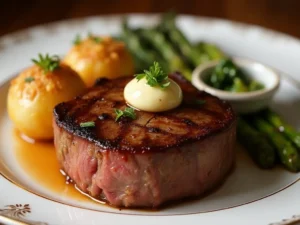
🍽 Pairing Ideas:
- For a surf-and-turf delight, try serving it with Stuffed Shrimp.
- Craving something lighter? Go with a zesty Tropical Shrimp Salad.
- For a more filling meal, include creamy Marry Me Chicken Pasta or cheesy Ground Beef Quesadilla.
How to Cook the Original Delmonico Steak Recipe
Pan-Searing vs. Grilling: Which is Best?
When it comes to preparing an authentic Delmonico steak, the age-old debate begins: pan-searing or grilling? Both methods bring out the flavor of a high-quality steak, but only one mirrors the original cooking technique from the 1800s.
Why Pan-Searing is Closer to the Original:
Delmonico’s Restaurant traditionally cooked their signature steaks indoors on cast iron, not over open flame. That means pan-searing, followed by finishing the steak in a hot oven, is the historically accurate method. This technique produces a thick, golden-brown crust while maintaining a tender, juicy interior.
Benefits of Pan-Searing:
- Creates a flavorful Maillard crust
- Allows for butter basting with herbs and garlic
- Offers more control over doneness
When Grilling Works:
Grilling is a great alternative if you’re cooking outdoors. It adds a subtle smoky flavor and can cook the steak evenly, especially with thick cuts. But you’ll lose out on the buttery, herb-infused basting typical of Delmonico’s pan-finished style.
Verdict: For the most authentic Delmonico steak, choose pan-searing with butter basting.
Step-by-Step Original Cooking Method
Ready to cook the perfect Delmonico steak at home? Here’s the tried-and-true method passed down from culinary tradition.
Step 1: Bring the Steak to Room Temperature
- Remove steaks from the fridge at least 30 minutes before cooking. This ensures even cooking and better searing.
- Pat the steaks dry with paper towels to remove surface moisture.

Step 2: Season Generously
- Coat both sides of the steak with kosher salt and freshly ground black pepper.
- Let the seasoning sit while you preheat your skillet.
Step 3: Preheat the Cast-Iron Skillet
- Heat a cast-iron skillet over medium-high to high heat until it just begins to smoke.
- Add 2 tablespoons of olive oil and swirl to coat the surface.


Step 4: Sear the Steaks
- Place the steaks in the skillet (don’t crowd the pan—cook in batches if necessary).
- Sear each side for 3 to 4 minutes, creating a deep golden crust.
- Use tongs to sear the sides and fat cap for 30 seconds.
Step 5: Add Butter and Aromatics
- Lower the heat to medium.
- Add 3 tablespoons of unsalted butter, 2 cloves crushed garlic, 2 sprigs of rosemary, and 2 sprigs of thyme to the pan.
- As the butter melts, tilt the pan slightly and begin basting the steak with a spoon. Continue for about 1 to 2 minutes.
Step 6: Finish in the Oven (Optional but Authentic)
- Preheat oven to 400°F (205°C).
- Transfer the skillet to the oven or move steaks to a baking sheet.
- Roast for an additional 5–7 minutes depending on your preferred doneness:
- Rare: 120°F
- Medium-Rare: 130°F
- Medium: 140°F
- Medium-Well: 150°F
Pro Tip: Use a meat thermometer to avoid overcooking. Delmonico steaks are best enjoyed medium-rare for maximum tenderness.
Step 7: Rest and Serve
- Transfer steaks to a cutting board.
- Tent loosely with foil and let rest for 5 to 10 minutes. This step allows juices to redistribute for a moist, flavorful bite.
- Slice and serve with your choice of Delmonico potatoes or a glass of full-bodied red wine.
Cooking Time Breakdown Table
| Cooking Stage | Time |
|---|---|
| Room Temp Rest | 30 mins |
| Pan Searing | 6–8 mins |
| Basting with Butter | 1–2 mins |
| Oven Finishing | 5–7 mins |
| Resting Time | 5–10 mins |
| Total Time | 45–55 mins |
With this original method, you’ll get a rich crust, tender interior, and bold beefy flavor—the true essence of a classic Delmonico steak. Check out our steak doneness temperature guide for perfect results every time.

Making the Signature Original Delmonico Steak Recipe Butter Sauce
Classic Delmonico Butter Sauce Recipe
A perfect Delmonico steak isn’t complete without its buttery companion. While the steak shines on its own, this rich, herb-infused butter sauce adds a silky texture and flavor depth that truly complements the meat. The original version was simple, made in the pan right after the steak was cooked—using the leftover brown bits (fond), herbs, garlic, and butter.
Here’s how to make it at home using traditional techniques with a few modern touches.
Ingredients (Serves 2):
- 3 tablespoons unsalted butter
- 2 cloves garlic, smashed
- 1 small shallot, finely diced
- 2 teaspoons Dijon mustard (optional, for extra tang)
- 1 teaspoon Worcestershire sauce (adds umami depth)
- 2 sprigs fresh thyme
- 1 sprig rosemary
- 1 tablespoon chopped parsley (for garnish)
- Salt and pepper, to taste
- 1 teaspoon steak pan drippings or fond (use after cooking the steak)
Note: You can prepare this sauce in the same skillet you used for searing to retain the steak’s flavors.
Instructions:
- After removing the cooked steaks, pour off most of the fat in the skillet, leaving behind about 1 tablespoon of the steak juices and brown bits (fond).
- Reduce heat to medium-low.
- Add butter, garlic, shallot, thyme, and rosemary to the pan. Sauté gently until the butter melts and the shallots are translucent—about 2 minutes.
- Stir in Dijon mustard and Worcestershire sauce, scraping up any remaining fond from the pan.
- Simmer for 1–2 minutes, then season with salt and pepper to taste.
- Remove from heat and strain (optional) if you prefer a smoother sauce.
- Finish with fresh chopped parsley and spoon over the rested steak just before serving.
This sauce isn’t heavy—just rich enough to enhance the beef’s flavor while keeping the texture velvety. It’s designed to mimic the same flavor layering that 19th-century chefs used at Delmonico’s, without overpowering the steak’s natural beauty.
Flavor Variations: Garlic, Shallots, and Herbs
While the original butter sauce is legendary, today’s home chefs have more room to get creative. Here are a few modern twists that still stay true to the Delmonico spirit:
Red Wine Butter Sauce:
- Add ¼ cup dry red wine after sautéing shallots and reduce until thick before adding butter.
Blue Cheese Butter Sauce:
- Mix in 1 tablespoon crumbled blue cheese off the heat for a punchy, creamy finish.
Smoked Garlic Infused Butter:
- Roast garlic beforehand and blend it into the butter with smoked sea salt for earthy sweetness.
These variations aren’t required, but they can elevate your dish for a more restaurant-level experience—especially if you’re serving the steak for guests or a special dinner.
Sauce Pairing Table:
| Sauce Variation | Flavor Profile | Best With Doneness |
|---|---|---|
| Classic Herb Butter | Rich, balanced, savory | Medium-Rare |
| Red Wine Butter | Deep, bold, slightly acidic | Medium or Medium-Rare |
| Blue Cheese Butter | Tangy, creamy, umami | Medium |
| Roasted Garlic Butter | Sweet, earthy, smooth | Medium-Well |
FAQ: Original Delmonico Steak Recipe
What is the original Delmonico steak cut?
The original Delmonico steak doesn’t refer to a single specific cut of beef. Historically, it was a thick, boneless cut of high-quality beef served at Delmonico’s Restaurant in New York City. Most chefs agree that ribeye, chuck eye, or strip loin were the most likely candidates. What made it a “Delmonico” was not the cut, but the thickness, marbling, and preparation technique—pan-seared, basted with butter, and finished in the oven.
How do you cook an authentic Delmonico steak?
To cook an authentic Delmonico steak, start with a well-marbled ribeye that’s at least 1.5 inches thick. Pan-sear the steak in a cast-iron skillet with oil, then baste it with butter, garlic, and herbs, and finish it in a hot oven to your preferred doneness. Let it rest, then top with a classic Delmonico butter sauce for a true restaurant-style experience.
What’s the difference between ribeye and Delmonico steak?
The ribeye is a cut of beef taken from the rib section and known for its marbling and flavor. The Delmonico steak, on the other hand, refers more to the style and tradition of the preparation than to a specific cut. While many Delmonico steaks are ribeyes, not all ribeyes are prepared in the Delmonico style. It’s the cooking method and luxurious experience that define it.
Can I grill Delmonico steak?
Yes, you can grill Delmonico steak, especially if you’re cooking outdoors. However, if you want to stay true to the original method, stick with pan-searing in a cast-iron skillet and finishing in the oven. Grilling adds a smoky flavor but loses the chance to baste with rich herb butter, which is a signature of the classic dish.
What should I serve with Delmonico steak?
Traditional sides include Delmonico potatoes (a creamy, baked dish with cheese), creamed spinach, mashed potatoes, or asparagus. For beverages, a bold red wine like Cabernet Sauvignon or a full-bodied Zinfandel complements the richness of the steak perfectly.
Is Delmonico steak tender or tough?
A properly cooked Delmonico steak should be exceptionally tender, especially if you use a well-marbled cut like ribeye. The pan-searing method and butter basting lock in moisture and enhance texture. With correct seasoning, searing, and resting time, you’ll get a steak that’s flavorful, juicy, and melt-in-your-mouth tender.
Conclusion: Bringing the Steakhouse Experience Home
The Original Delmonico Steak Recipe is more than just a meal—it’s an experience rooted in nearly two centuries of American culinary history. From its legendary beginnings at Delmonico’s in New York City to modern kitchens across the country, this steak remains a timeless symbol of luxury, flavor, and precision.
By choosing the right cut, seasoning with confidence, pan-searing with care, and finishing with a decadent butter sauce, you’re not just cooking a steak—you’re recreating a piece of food history.

How to Make a Legendary Original Delmonico Steak Recipe
Ingredients
Method
- 1. Remove steaks from the fridge and let them sit at room temperature for 30 minutes.
- 2. Pat dry and season both sides generously with kosher salt and black pepper.
- 3. Heat a cast-iron skillet over medium-high heat. Add olive oil and swirl to coat.
- 4. Sear steaks 3–4 minutes per side until golden brown. Sear the edges for 30 seconds.
- 5. Lower heat to medium. Add butter, garlic, rosemary, thyme, and shallots to the pan.
- 6. Tilt the pan and baste the steaks with the melted butter for 1–2 minutes.
- 7. Transfer skillet to a 400°F (205°C) oven and cook for 5–7 minutes to desired doneness.
- 8. Remove steaks from the pan and let rest under foil for 5–10 minutes.
- 9. Prepare Delmonico butter sauce in the same pan. Add mustard, Worcestershire, and parsley. Stir and spoon over steaks before serving.

